media
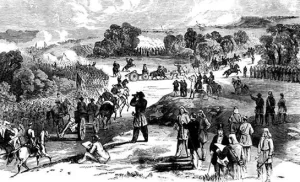 When the gunfire in a battle begins, most of us want to be as far away as possible, including the soldiers fighting in the battle, but in the case of The Battle of Bull Run during the American civil war, this was not the case. In a seriously strange phenomenon, many of Washington’s civilians and the wealthy elite, including congressmen and their families, went on picnics on the sidelines to watch the battle. After that, it became known as “The Picnic Battle” but it was definitely no picnic, as they would soon find out. What no one realized was that The Battle of Bull Run, fought on July 21, 1861, was actually going to be remembered as the first gory conflict in a long and bloody war.
When the gunfire in a battle begins, most of us want to be as far away as possible, including the soldiers fighting in the battle, but in the case of The Battle of Bull Run during the American civil war, this was not the case. In a seriously strange phenomenon, many of Washington’s civilians and the wealthy elite, including congressmen and their families, went on picnics on the sidelines to watch the battle. After that, it became known as “The Picnic Battle” but it was definitely no picnic, as they would soon find out. What no one realized was that The Battle of Bull Run, fought on July 21, 1861, was actually going to be remembered as the first gory conflict in a long and bloody war.
Bull Run was the first land battle of the Civil War. It was a battle that was fought at a time when many Americans believed the war would be short and relatively bloodless. They just really didn’t understand how this was going to play out. So, believe it or not, the civilians went out to watch the war, bringing a picnic lunch along with them. If you think about it, bringing the family and a picnic lunch out to watch a battle, had to seem strange, or even insane, and really it was, but many of the civilians were there because they had to be.
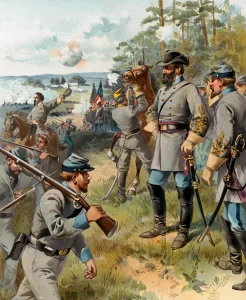
While the reporters were there too, for their own selfish reasons, they were quick to condemn the other civilians who were there, calling them frivolous. The Boston Herald published a lengthy, “not-so-funny” comedy poem about the scene. They were making the civilians look reckless. In the poem, HR Tracy describes a story “lacking in glory” about “careless picnickers who heedlessly went out to watch the battle and then ran away, driving over dead and wounded in their carriages.” This kind of public criticism gave rise to the idea of Bull Run as the “picnic battle” but there was more going on. No one really knows exactly how many civilians were there on that day. The recruits in the battle signed up to Lincoln’s army for a 90-day term, because they all thought the war would be over that fast. It’s also hard to be sure how many watchers there were. Many people say men, women and children, but others say it was mostly men.
The people did bring food and even picnic baskets to watch the battle, but it wasn’t exactly like they thought it was a leisurely day out for either spectators or combatants. Picnic food “was more of a necessity than a frivolous pursuit on a Sunday afternoon,” writes Jim Burgess writes for the Civil War Trust. Just getting to Centreville, where the battle was fought, was a seven-hour carriage ride away from Washington, so they had to take food for the journey, because the local Virginians were not going to offer the Union onlookers any kind of hospitality. Some called them a “throng of sightseers” while others mentioned that they were selling pies and other edibles. I think the whole thing was a misunderstanding of epic proportions. Unfortunately, after the 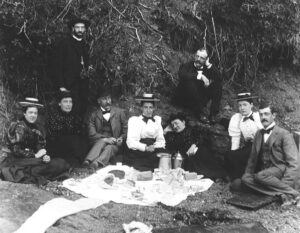 people found out how horrific the whole thing was, and began to witness the terrible bloodshed, they were also subjected to the snide remarks of the media, as if they didn’t already feel bad enough.
people found out how horrific the whole thing was, and began to witness the terrible bloodshed, they were also subjected to the snide remarks of the media, as if they didn’t already feel bad enough.
The reality was that the battle wasn’t just a spectator sport. It was important politically, so the politicians attended. It was important socially, so the journalists attended. It was also an opportunity to sell food, so the food vendors attended. In the end, it was really a circus, and once it was over, there was no one left who innocently thought that this war would end in 90 days, and no one left that thought there would be little bloodshed.
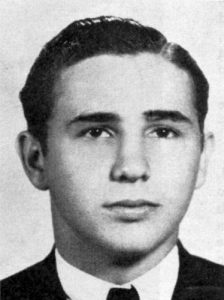
 Once upon a time, journalists and the media as a whole had an obligation to tell the truth, or at least tell the public that the story was their opinion only. The had to have reliable sources, even if they didn’t have to disclose them. While they weren’t “forced” to be truthful, they were completely shunned if they didn’t.
Once upon a time, journalists and the media as a whole had an obligation to tell the truth, or at least tell the public that the story was their opinion only. The had to have reliable sources, even if they didn’t have to disclose them. While they weren’t “forced” to be truthful, they were completely shunned if they didn’t.
When a journalist is mesmerized by someone, they can definitely fall hard for them. Such was the case with “the job-creating Führer with eyes that were like ‘blue larkspur.'” Why did so many journalists spend years dismissing the evidence of Hitler’s atrocities? Some, like the Christian Science Monitor called Hiter’s effect on Germany as providing “a dark land a clear light of hope.” They talked about how smoothly things were running, how well regulated everything was, and how great the police uniforms were. Strangely, when it came to the killing of the Jewish people, they said things like, “I have so far found quietness, order, and civility;” there was “not the slightest sign of anything unusual afoot.” As for all those “harrowing stories” of Jews being mistreated…they seemed to apply “only to a small proportion;” most were “not in any way molested.” They made it seem like as long as the number were “low,” the problem couldn’t possibly be a big one. Well, the reality as we all know now is that the “problem” was enormous, heinous, and horrific beyond imagination.
Trusting the journalists implicitly, without doing your own research is a very dangerous plan. Journalists have been known to assist in “hiding the evidence” in a matter…as we have seen in recent years. I don’t believe that all journalists are “bad” people, but those that are “bad” people ruin the reputation of journalism for every good journalist. I’m not even sure I would call some of the media, journalists. They are truly just “bad fiction writers,” in my opinion. Anyone who covers up the truth in the name of free speech or forces others to hide the truth in the name of tolerance is a bad journalist.
Many in the American mainstream newspaper industry portrayed the Hitler regime positively, especially in its 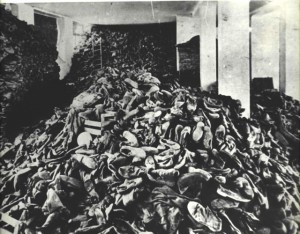
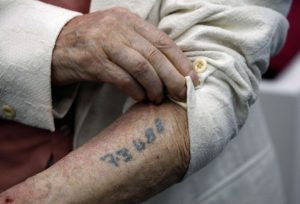 early months. Looking back now, we wonder how they could have said the good things they said about such a horrible dictator. The media published warm human-interest stories about Hitler, while simply excusing or rationalizing Nazi anti-Semitism. These actions should haunt the conscience of United States Journalism to this day. There was no excuse for what Hitler did, and to write it off as “not so bad” was absolutely inexcusable.
early months. Looking back now, we wonder how they could have said the good things they said about such a horrible dictator. The media published warm human-interest stories about Hitler, while simply excusing or rationalizing Nazi anti-Semitism. These actions should haunt the conscience of United States Journalism to this day. There was no excuse for what Hitler did, and to write it off as “not so bad” was absolutely inexcusable.
Of course, not all of the “bad journalism” of the day was sinister. Hitler was an unfamiliar subject when he first appeared on the international scene. His ideals and his movement were unknown, and so could have been mistaken for something quite innocent…at first. The Nazis had risen from barely 18 percent of the national vote in mid-1930 to become Germany’s largest party only two years later and gained power just months after that. I suppose that the political rise of Hitler could have just seemed like someone with great ideas stepping up to the microphone. It is thought that many American editors and reporters erroneously assumed, based on previous experience, that a radical candidate would show some restraint once in office, but that was not Hitler’s plan. He planned to take over the world…to become a One World Government. Really, any time anyone tries to take away the sovereignty of a country, they are not acting in the best interest of that country. That is something we must never forget.
An editorial in the Philadelphia Evening Bulletin on January 30, 1933, asserted that “there have been indications of moderation” on Hitler’s part. The editors of The Cleveland Press, on January 31, 1933, claimed the 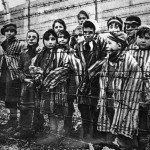
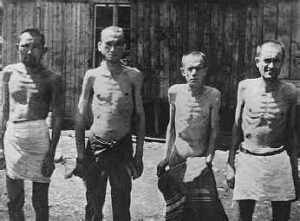 “appointment of Hitler as German chancellor may not be such a threat to world peace as it appears at first blush.” Frederick Birchall, Berlin bureau chief for The New York Times, found “a new moderation” in the political atmosphere following Hitler’s rise to power. Unfortunately, all of them were dead wrong!! Hitler was not a moderate. He was, in fact, more of a threat than they could ever have imagined. Hitler was the epitome of evil, and like it or not, any journalist who softened the story, was guilty of hiding the evidence.
“appointment of Hitler as German chancellor may not be such a threat to world peace as it appears at first blush.” Frederick Birchall, Berlin bureau chief for The New York Times, found “a new moderation” in the political atmosphere following Hitler’s rise to power. Unfortunately, all of them were dead wrong!! Hitler was not a moderate. He was, in fact, more of a threat than they could ever have imagined. Hitler was the epitome of evil, and like it or not, any journalist who softened the story, was guilty of hiding the evidence.
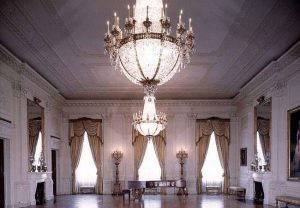 With the new school year just beginning, the reality is that the year’s end will arrive in incredibly short order. Football, basketball, and track will be over, and before we know it, the high school students are getting ready for prom again. Everyone wants their prom to be that wonderful dance that is unforgettable…one that they can carry the memories of forever. Proms are usually held in the school gym, or maybe at an events center, and on rare occasions, a hotel, but in 1975, in Washington DC, was held what could only be called the ultimate prom!! And don’t think your school could duplicate this particular prom, because they couldn’t. This particular prom was held at the White House!! It was the only prom ever to be held at the executive mansion, which makes it an odd event in White House social history.
With the new school year just beginning, the reality is that the year’s end will arrive in incredibly short order. Football, basketball, and track will be over, and before we know it, the high school students are getting ready for prom again. Everyone wants their prom to be that wonderful dance that is unforgettable…one that they can carry the memories of forever. Proms are usually held in the school gym, or maybe at an events center, and on rare occasions, a hotel, but in 1975, in Washington DC, was held what could only be called the ultimate prom!! And don’t think your school could duplicate this particular prom, because they couldn’t. This particular prom was held at the White House!! It was the only prom ever to be held at the executive mansion, which makes it an odd event in White House social history.
Our president at the time was Gerald Ford, and he had a 17 year old daughter named Susan. Like most daughters, Susan knew that her daddy wanted to make her happy. So, she asked him if her high school could hold their prom at the White House. It was the first and only prom ever to be held there…and not something that is likely to happen again. Susan went to school at the Holton-Arms school. The prom was held on March 31, 1975, and President and Mrs Ford were on their way from Belgium to Spain as part of a diplomatic tour of Europe. In their place was the president’s sister-in-law, Janet Ford, “a small figure in a white lace dress, casting  a tolerant but observant eye on the proceedings.”
a tolerant but observant eye on the proceedings.”
Over forty years later, the students who attended the regal prom still carry those wonderful memories of a very special prom that could never be equaled. They even got to take a sunset cruise on the presidential yacht. Many parties have been held at the White House, but none quite like this one. The White House was rockin’ that Saturday, with Susan Ford. her classmates and their dates, dancing the bump and the hustle in the East Room until 1:00am. Susan had been a student at the Holton-Arms School, an academy for girls in Bethesda, Maryland, since her freshman year. “The members of the class of 1975 paid the cost of the prom…$1,300, after raising funds at bake sales and school fairs. Tablecloths were made out of floral pink and yellow sheets. The menu included Swedish meatballs and quiche, as well as a nonalcoholic punch made of tea, lemonade, soda, grape juice, and sugar. Susan and her classmates assembled the centerpieces, candles in a setting of daisies, tulips, lilies, sweet peas, and ming fern.”
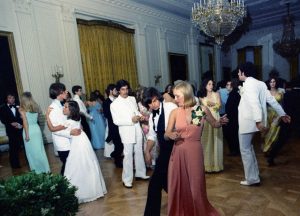 “The girls wore long dresses, light makeup, casual hairdos, and, in many cases, orchid corsages,” the Associated Press reported. “Many of their escorts, in black or white tuxedos, wore boutonnieres and below-the-collar length hair.” “Susan, at that age, was strikingly beautiful,” says Sally Alexander, a retired English teacher at Holton-Arms, who was one of six chaperones. “And it’s a great deal of fun to watch a bunch of beautiful young girls with handsome young men, all dressed up. They were clearly excited about being where they were, but they were not uncomfortably awed. It was a beautiful affair.” And of course, the media was there to document the entire historic prom. So, if you want your prom to be this cool, you had better start planning now…or maybe several years ago.
“The girls wore long dresses, light makeup, casual hairdos, and, in many cases, orchid corsages,” the Associated Press reported. “Many of their escorts, in black or white tuxedos, wore boutonnieres and below-the-collar length hair.” “Susan, at that age, was strikingly beautiful,” says Sally Alexander, a retired English teacher at Holton-Arms, who was one of six chaperones. “And it’s a great deal of fun to watch a bunch of beautiful young girls with handsome young men, all dressed up. They were clearly excited about being where they were, but they were not uncomfortably awed. It was a beautiful affair.” And of course, the media was there to document the entire historic prom. So, if you want your prom to be this cool, you had better start planning now…or maybe several years ago.

